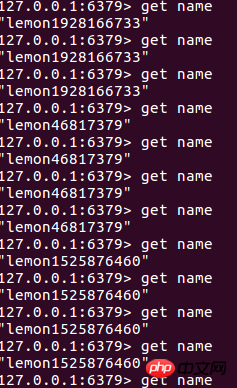Home >Backend Development >PHP Tutorial >How to implement PHP daemonization
How to implement PHP daemonization
- 墨辰丷Original
- 2018-05-17 10:34:272265browse
This article mainly introduces the method and principle process of realizing PHP daemonization, as well as the code implemented in C environment and PHP environment. Friends who like it can save it.
What is a daemon process?
A daemon process is usually considered to be a background task that does not control the terminal. It has three distinctive features: it runs in the background, is separated from the process that started it, and does not need to control the terminal. The commonly used implementation method is fork() -> setsid() -> fork()
There is a function daemon in glibc. Calling this function can cause the current process to leave the terminal and become a daemon process. For details, see man daemon. There is currently no such function in PHP. There are two ways to implement daemonization of PHP programs:
1. Use the system command nohup
nohup php myprog.php > log.txt. Although the program is executed in the background, it actually relies on the terminal. When the user exits the terminal, the process will be killed. You need to use nohup to achieve
2. Use supervisor tool (recommended solution)
Detailed tutorial on using supervisor
3. Of course, it can also be implemented by program (not recommended for use in production environments) C program implementation:
#include#include#include#include#include#include//实现守护进程步骤
void crete_daemon(void)
{
pid_t pid = 0;
pid = fork();
if (pid<0)
{
perror("fork");
exit(-1);
}
if (pid > 0)
{
//1.父进程直接退出
exit(0);
}
//2.
//执行到这里就是子进程
//setsid 将当前进程设置为一个新的会话期session,目的就是
//让当前进程脱离控制台,成为守护进程。
pid = setsid();
if (pid < 0)
{
perror("setsid");
exit(-1);
}
//3.设置当前进程的工作目录为根目录,不依赖于其他
chdir("/");
//4.umask设置为0确保将来进程有最大的文件操作权限
umask(0);
//5.关闭文件描述符
//先要获取当前系统中所允许打开的最大文件描述符数目
int i = 0;
int cnt = sysconf(_SC_OPEN_MAX);
for (i=0;i
Test results:

Daemon process:

The two more critical PHP functions here are pcntl_fork() and posix_setsid()
Fork() a process means creating a copy of the running process. The copy is considered a child process, and the original process is considered the parent process. After fork() is run, it can be separated from the process and terminal control that started it, which also means that the parent process can exit freely. setsid(), it first makes the new process become the "leader" of a new session, and finally makes the process no longer control the terminal. This is also the most critical step in becoming a daemon process, which means that it will not be forced when the terminal is closed. Exit the process. This is a critical step for a resident process that cannot be interrupted. Perform the last fork(). This step is not necessary, but it is usually done. Its greatest significance is to prevent the control terminal from being obtained. (When a terminal device is opened directly and the O_NOCTTY flag is not used, the control terminal will be obtained)
Other matters:
chdir() The daemon process inherits the current status of the parent process by default. Working directory, when umount occurs on the system disk, it will cause a lot of trouble. Usually "/" is used as the current working directory of the daemon process, which can avoid the above problems. umask() The daemon process inherits the file permission mask of the parent process by default. This This brings a lot of trouble to the sub-process using files. Therefore, setting the file permission mask to 0 can greatly enhance the flexibility of the daemon. fclose(STDIN), fclose(STDOUT), fclose(STDERR) closes the standard I/O stream. The child process created using the fork function will inherit some open files from the parent process. These opened files may never be read or written by the daemon, but they still consume system resources and may cause the file system in which they reside to be unmountable.
Related recommendations:
Two daemon process methods in php
Php multi-process implementation programming examples
PHP implements multi-process and multi-threading
##
The above is the detailed content of How to implement PHP daemonization. For more information, please follow other related articles on the PHP Chinese website!

